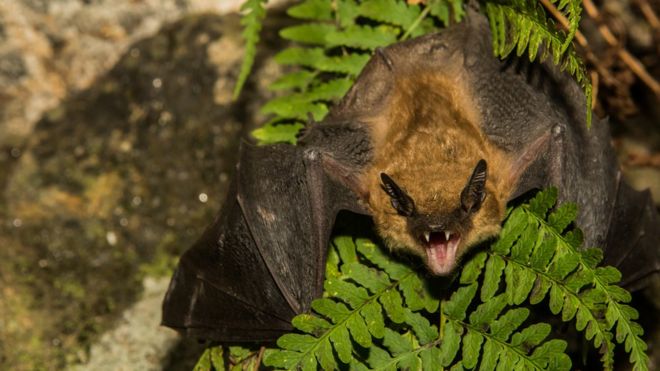
A structure that allows sound information to be processed extremely fast has been identified in bats’ brains.
Researchers were able to analyse the echo-locating animals’ neurones as they caught their insect prey in darkness.
But the bats have to process a lot of sound information.
“The vocalisations are insanely fast. It is a heavy processing load to perform this behaviour,” said Dr Melville Wohlgemuth, who led the study.
The research is published in the journal JNeurosci.
The scientists wanted to find out whether this need to process over 120 sound clicks per second had resulted in the evolution of a more efficient brain structure.
Dr Wohlgemuth located the “superior colliculus” structure in the bats’ brain. This is the area of the brain that lets the bat know where things are in relation to themselves. He found that in the bats, this structure is uniquely adapted to analyse auditory data quickly and enable quick and accurate corrections of the body in response.
In order to catch the insects, bats have to know where their body is, and put that in the context of where their prey is. And they need to do this fast.
The neurones that help them process spatial and motor information were found to be very close together. This close proximity is likely to be what allows them to quickly process the echoes bouncing back from their prey.
